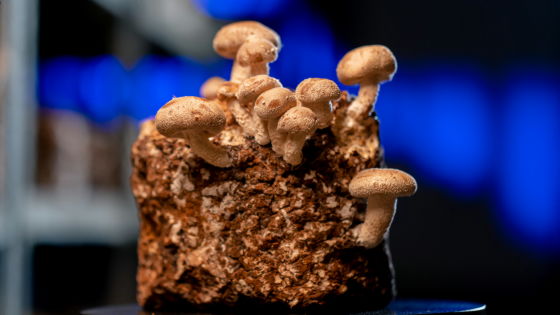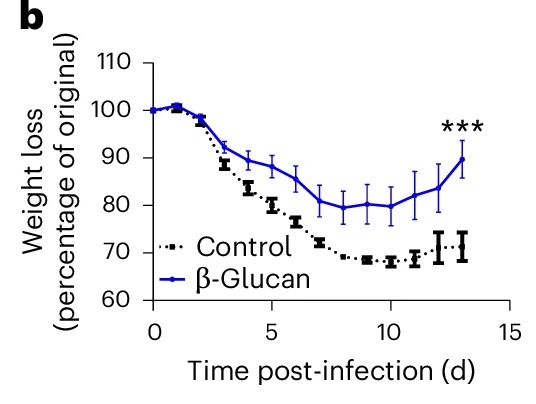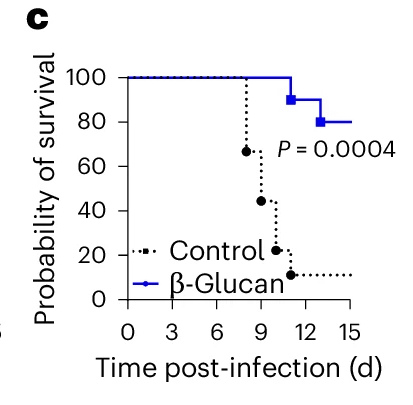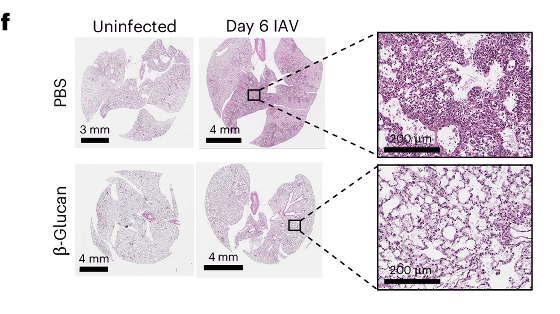Dietary fiber in mushrooms may reduce influenza-related mortality

Mushrooms are delicious, rich in vitamins, minerals and other nutrients, and are known to be a healthy food. It has been discovered that the dietary fiber contained in mushrooms, called
β-Glucan reprograms neutrophils to promote disease tolerance against influenza A virus | Nature Immunology
https://www.nature.com/articles/s41590-024-02041-2
New discovery could help protect against influenza | Newsroom - McGill University
https://www.mcgill.ca/newsroom/channels/news/new-discovery-could-help-protect-against-influenza-363625
Common Mushroom Fiber May Protect Against Flu, Study Finds : ScienceAlert
https://www.sciencealert.com/common-mushroom-fiber-may-protect-against-flu-study-finds
Beta-glucan is a type of dietary fiber that makes up the cell walls of fungi such as mushrooms, as well as grains such as barley and oats. The beta-glucans contained in each food have different molecular structures and molecular weights, which affect their solubility and physiological effects.
A research team from McGill University in Canada recently administered beta-glucan to mice, infected them with influenza virus, and compared the progress of the mice in the control group who did not receive beta-glucan. As a result, the mice that received beta-glucan had less lung damage and a lower risk of death.
The graph below shows weight loss after influenza virus infection, with the vertical axis showing the weight loss rate and the horizontal axis showing the number of days after infection. The mice administered beta-glucan, shown by the blue line, lost less weight than the control group, shown by the black dotted line, suggesting that they were less affected by the viral infection.

The graph below shows the mortality rate after influenza virus infection, with the vertical axis showing the mortality rate and the horizontal axis showing the number of days after infection. It can be seen that the mice administered beta-glucan, shown by the blue line, had a lower mortality rate than the control group mice, shown by the black dotted line.

The figure below compares the lung tissue of mice before infection (left) and six days after infection (right). The control mice (top) had severe tissue damage after infection, while the mice that were administered β-glucan (bottom) had less damage.
The mechanism by which beta-glucan protects against influenza viruses is thought to be by reprogramming neutrophils , a type of immune cell, to prevent excessive inflammation in the lungs. Most deaths from influenza are caused by immune overreactions, not the virus itself. Therefore, by limiting the risk of neutrophil overreactions, beta-glucan may reduce the risk of serious complications such as pneumonia after influenza virus infection.
'Neutrophils have long been known to cause inflammation, but beta-glucan has the ability to shift the role of neutrophils to suppress inflammation,' said Kim Tran of McGill University, co-first author of the paper.
'Beta-glucans are found in the cell walls of all fungi, including those that live in the human body as part of the microbiome,' said Professor Maziar Dibangahi , an immunologist at McGill University. 'It's an intriguing hypothesis that an individual's fungal levels and composition may influence how the immune system responds to infection, in part through the influence of beta-glucans.'
Since this study was conducted on mice, it is unclear whether the same effects would be seen in humans. The research team plans to investigate whether the findings can be applied to humans in the future.
Related Posts:







